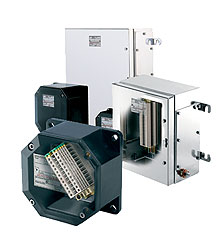 |
 |

Lighting for Hazardous Areas: Ways to Achieve Safety
Workplaces that are situated in harsh and hazardous areas often pose a threat to the workers’ health and overall well-being. “Hazardous area” is a term that is used to refer to a place where there is a high risk of explosions or fires breaking out due to dangerously high concentrations of flammable gasses. Naturally, it is highly important to make sure that any equipment being installed in hazardous areas is well-suited and safe to use in such environments.Lighting for Hazardous Areas
Lighting for hazardous areas is imperative and has to be specially designed and tested to ensure that it will not interact with flammable gasses and increase the risk of a fire or an explosion. This can be achieved in three ways:- The lighting apparatus can be designed to prevent the gasses from getting inside it.
- The lighting apparatus can be designed to contain and cool some amounts of combustion gasses.
- The lighting apparatus may be designed to function in particular hazardous areas with specific flammable gasses. Then, it is possible to design it in such a way that it cannot heat the gas to the explosion temperature or inflame it with a spark.
- Flameproof. Designed to avert a possible internal explosion by allowing the hot gasses to escape through a special labyrinth system.
- Of increased safety. Designed to be very stable and robust, so that it can withstand significant external pressure.
- Oil/sand/powder/quartz filled. The insides of such lighting apparatus are submerged in one of the abovementioned substances to reduce the internal pressure.
- Encapsulated. The internal components of a lighting apparatus are covered with special protective materials.
- Pressurized. The inner pressure of a lighting apparatus is higher than the pressure of the environment, so there is no explosion risk. However, the internal pressure itself may pose a threat and has to be monitored carefully.
- Non-incendive. The lighting apparatus is designed in a way that it cannot ignite or produce sparks.
- Equipped with special protection. If a lighting apparatus has to function in some particularly rough or dangerous conditions, it may be equipped with protection that was specifically designed for it.
Source: http://www.justuxia.fi/
|
| ||
| info :: the boat for you :: how works :: technical informations :: extras :: cabins :: additional features :: contacts :: articles :: | ||
|
© 2007 - 2025 Lighting for Hazardous Areas: Ways to Achieve Safety Technology |